The sun is out, and so are the bugs! The MBHI office was simply “abuzz” with excitement this week over the unseasonably warm temperatures. We certainly weren’t the only ones soaking up the early sunshine: insects and other arthropods were out in droves, taking full advantage of the warmer days before the spring rains roll in.

Orange-winged carpet moth (Epirrhoe plebeculata)
These small, inconspicuous moths belong to the family Geometridae. Moths in this family are more easily recognized by their larvae, which are commonly referred to as “inchworms.” Inchworms get their name from the way they move; they only exhibit prolegs at the end of the abdomen, which results in a jerky movement allowing them to “inch” along.
Kelly Dix, April 28th, 2023. Larry Creek, Florence, MT.
Stansbury’s blister beetle (Tricrania stansburyi)
Admire these boldly colored beetles with eyes only, as they can ooze a liquid that can blister skin. The chemical responsible, cantharidin, is highly toxic to animals, but has been used by humans as both an aphrodisiac and a medical remedy. Stansbury’s blister beetles range across the western US. While the larvae help themselves to the contents of bees’ nests, adults do not eat and only live one to two weeks.
Kelly Dix, April 28th, 2023. Larry Creek, Florence, MT.
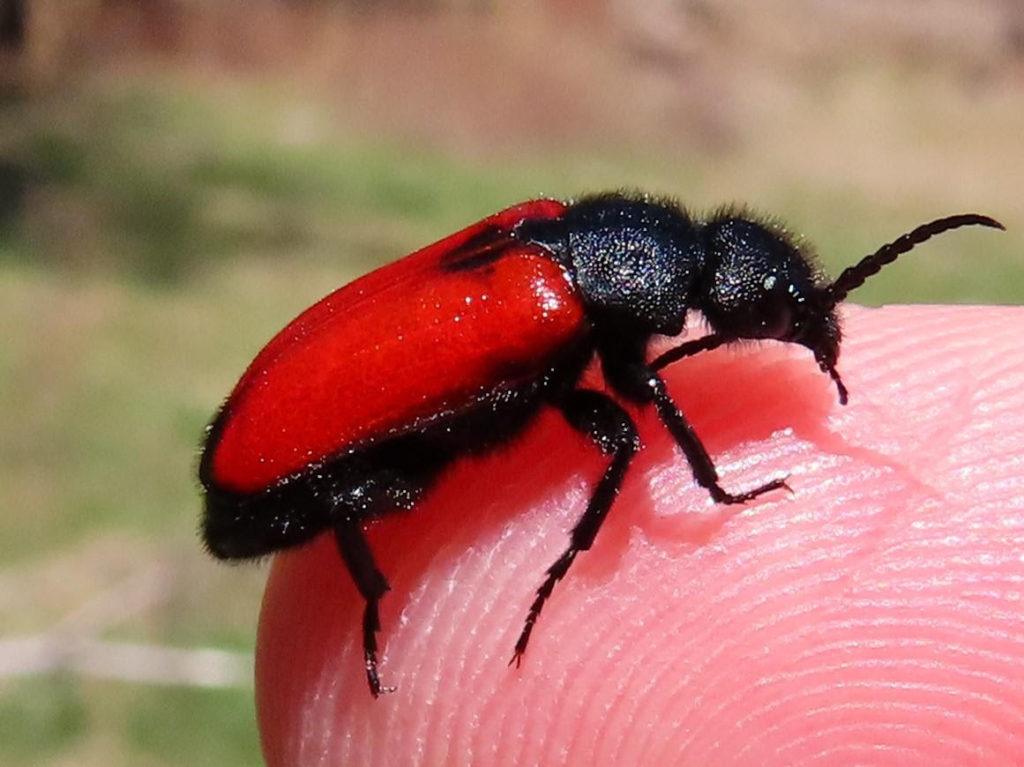

Springfly (Family Perlodinae)
Springflies are ancient insects, with fossil records dating to the Triassic period. Like many aquatic bio-indicator species, springfly larvae require, fast, cold, clean running water to thrive. There, many species prey on smaller aquatic insects, anchoring themselves to rocks only to ambush and engulf their prey when the opportunity arises.
Rose Marchak, April 30th, 2023. Greenough Park, Missoula, MT.
Boreal long-lipped tiger beetle (Cicindela longilabris)
Tiger beetles have been clocked running at 1.38 feet per second which may not sound like much, but factoring in their size, it’s similar to a grizzly bear running over 135 miles per hour. They run so fast, they outrun the capacity of their brain to process what they are seeing; they literally run themselves blind. This species is transcontinental in the north; they are commonly seen in open, disturbed areas like forest roads
Kelly Dix, April 28th, 2023. Larry Creek, Florence, MT.
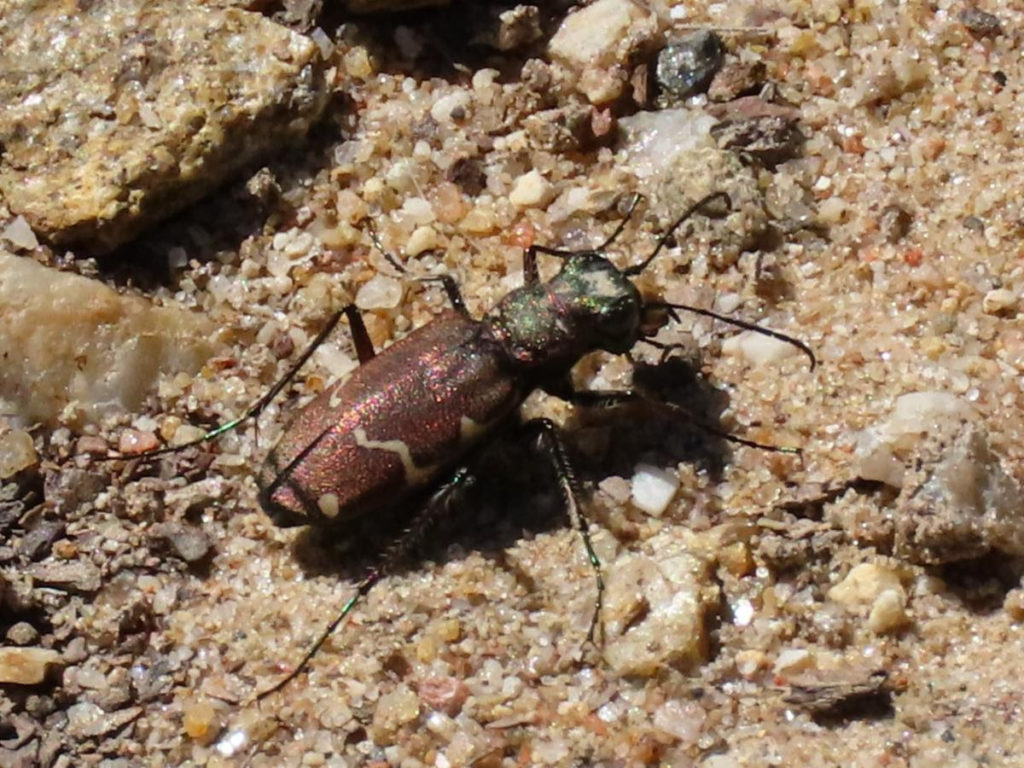
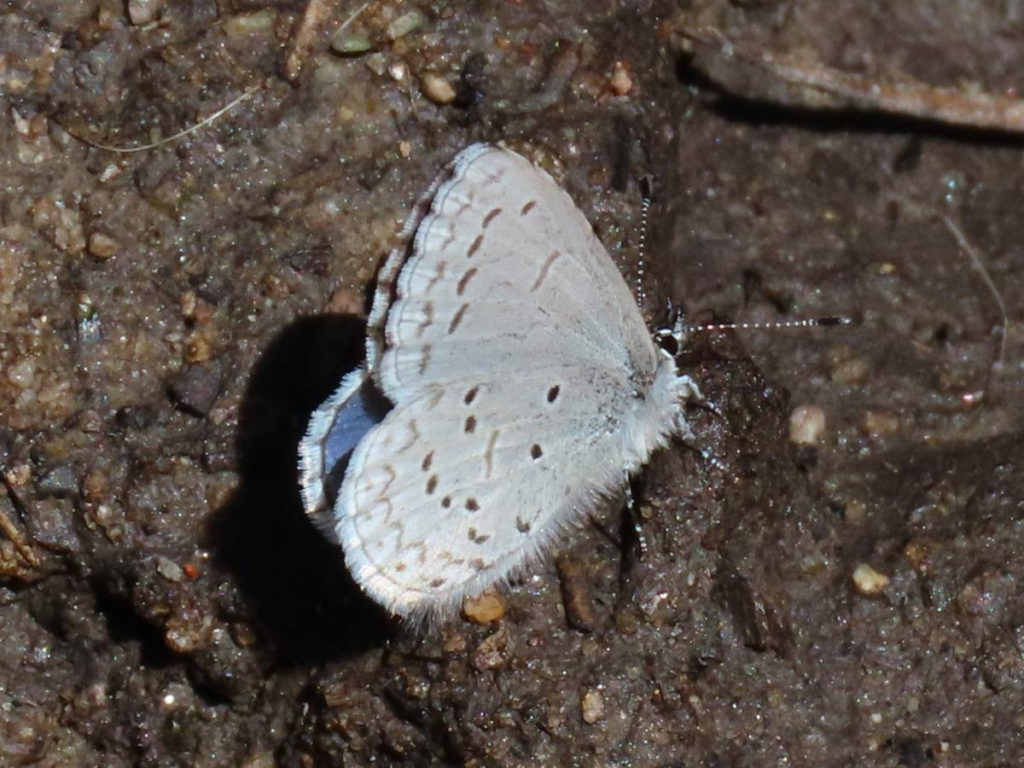
Echo azure (Celastrina echo)
This species of butterfly falls in a subfamily of butterflies known as “blues” because …well, the top-side of their wings is blue in color. As larvae, many butterflies in this subfamily “associate with ants; the ants provide protection from natural enemies in exchange for sugary secretions from specialized glands near the tail ends of the larvae” (Pacific Northwest Insects). They can be found in the western United States west from the Great Plains; southwestern Canada; and northern Mexico.
Kelly Dix, April 28th, 2023. Larry Creek, Florence, MT.
Green comma (Polygonia faunus)
Green Commas join at least 8 other butterfly species in Montana with the distinction of being hardy little insects. The Green Commas we see now will overwinter as adults and become active again once the weather warms in the late winter or early spring. Since they can feed on tree sap and minerals from carrion and dung, they are often found flying when snow is still on the ground – well before the first flowers of the season are in bloom. Preferred habitat includes riparian woodlands and wet meadows.
Carolyn Taber, April 30th, 2023. Rattlesnake Wilderness, Missoula, MT.
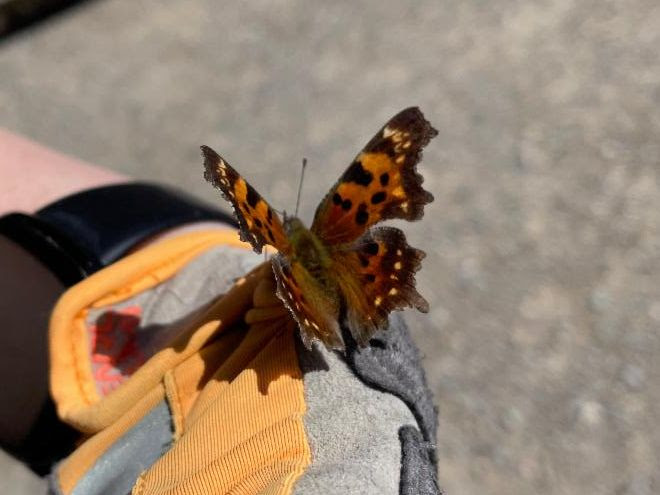

American lappet moth (Phyllodesma americana)
These moths look almost pettable, with their thick long scales. Besides their “fur,” you may notice how they hold their wavy-edged, gray and rust-colored wings at rest. The forewings are held tent-like, while the hindwings stick out horizontally. Color, shape, and wing position all work beautifully together to transform them into a “dead leaf.” Adults are nocturnal, have reduced mouthparts and do not feed, and are strong fliers with a rapid buzzing flight.
Glenn Marangelo, May 3rd, 2023. Missoula, MT
Vancouver bumble bee (Bombus vancouverensis)
Sun’s out, tongues out! Bumblebees are efficient pollinators that use their tongues to gather nectar from flowers. However, the Vancouver bumblebee has a short tongue relative to other bumblebee species, and usually resorts to licking the back of a flower’s nectar ducts. While less efficient than bumblebees whose long tongues easily access nectar, this method had proven worthwhile for the Vancouver bumblebee.
Kelly Dix, April 28th, 2023. Larry Creek, Florence, MT.
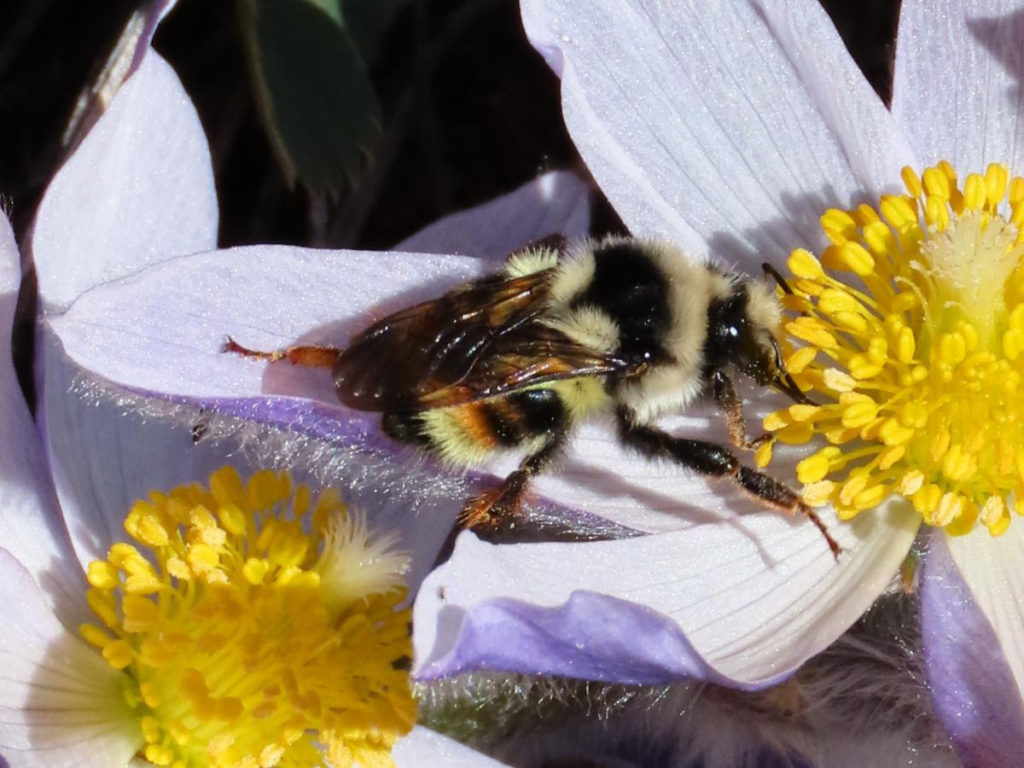
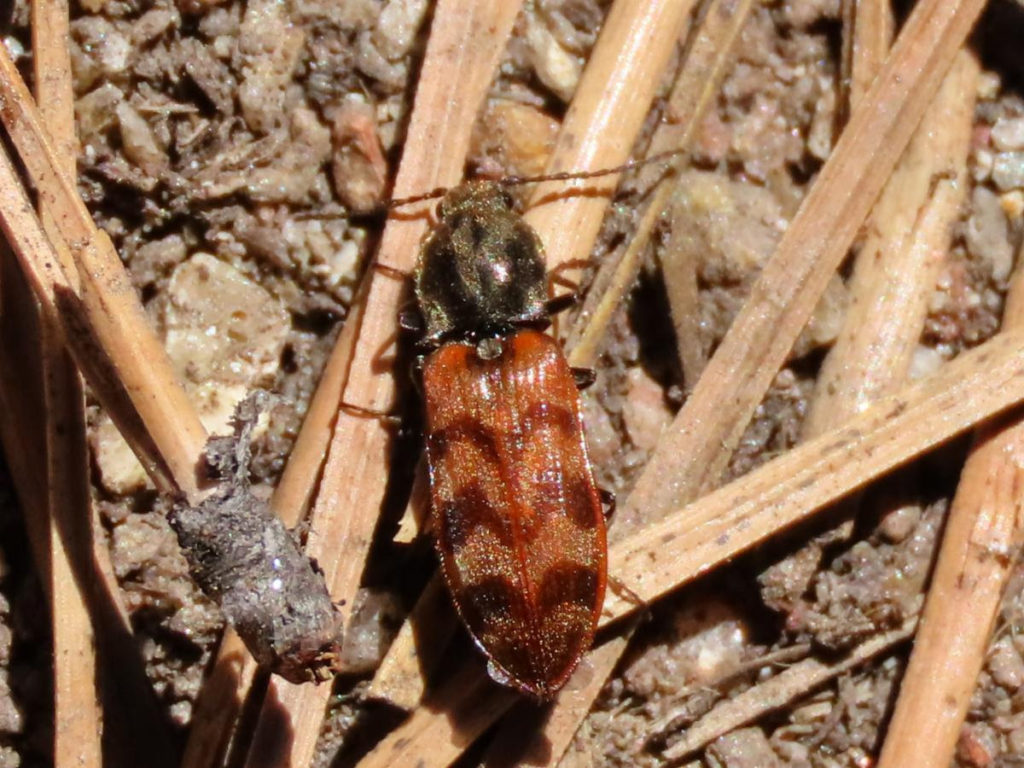
Click beetle (Pseudanostirus sp.)
Click beetles get their name from the characteristic “clicking” noise they produce when threatened. The noise is produced by a small “latch” on the thorax that, when released, produces the aforementioned clicking while launching the beetle into the air. While an effective anti-predator strategy, this tactic also works if the beetle is stuck on its back.
Kelly Dix, April 30th, 2023. Larry Creek, Florence, MT.
Seven-spotted lady beetle (Coccinella septempunctata)
Despite being an introduced species, the seven-spotted lady beetle is the state insect for Delaware, Massachusettes, New Hampshire, Ohio and Tennessee. Like many non-native ladybug species, the seven-spotted, or “C-7” was introduced to North America as pest control, eventually establishing in the mid-70’s. While this species poses a risk for out-competing native ladybugs, in its home range, its numbers may be declining.
Kelly Dix, April 30th, 2023. Larry Creek, Florence, MT.
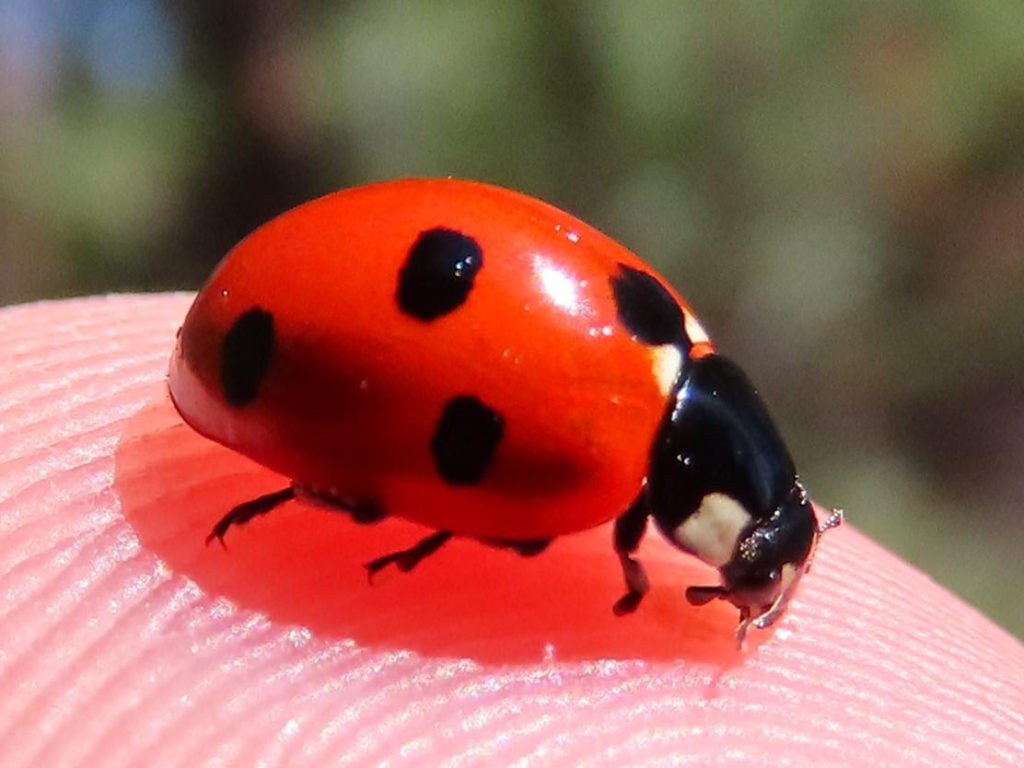
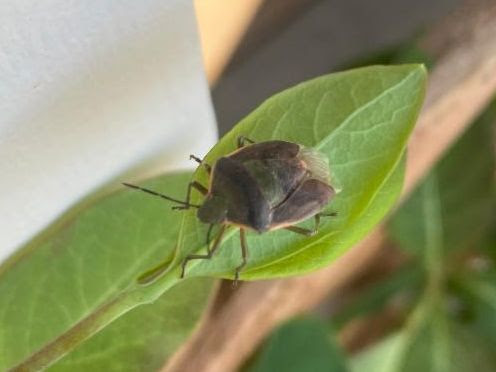
Stink bug (Chlorochroa sp.)
Stink bugs in the Chlorochroa genus are difficult to differentiate without dissection, but all 20 species have one thing in common: they stink. However, the composition of their defensive “stink” varies between species. As true bugs, they have piercing and sucking mouthparts that they use to pierce and consume plant tissues. Luckily, this one was just resting in the shade of a honeysuckle vine (as opposed to eating it).
Brenna Shea, April 28th, 2023. Missoula, MT
Oil beetle (Meloe sp.)
This strange looking beetle is likely the Black Meloe (Meloe niger). As you might guess from their short, stubby wings, the adults are flightless ground-dwellers. With their comically bloated abdomens, it would be amazing if they were able to get off the ground even if they had larger wings. If handled, they deploy a chemical defense that blisters skin, so admire with your eyes, not your hands.
Stephanie Murphy, May 3rd, 2023. Maclay Flats, Missoula, MT.
